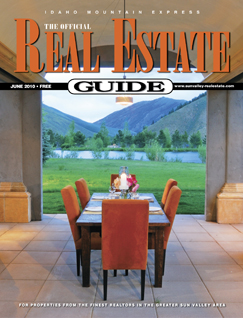| local
weather |
| front page |
| classifieds |
| calendar |
| last week |
| recreation |
| subscriptions |
| express jobs |
| about us |
| advertising info |
| sun valley guide |
| real estate guide |
| homefinder |
| sv catalogs |
|
|
| hemingway |
| Produced
& Maintained by Idaho Mountain Express, Box 1013,
Ketchum, ID 83340-1013 208.726.8060 Voice 208.726.2329 Fax |
| Copyright
© 2002 Express Publishing Inc. All Rights reserved. Reproduction in whole or in part in any form or medium without express written permission of Express Publishing Inc. is prohibited. |
For the week of June 4 - 10, 2003
![]()
Give the past a chance
The third try wasn’t a charm.
In its third bid for a home, the 120-year-old church that formerly housed a restaurant was left an orphan by the Ketchum City Council.
The council, facing a room full of parents and kids, rejected a proposal to re-locate and expand the city skate park to make room for the historical structure.
The old church struck out again.
The building has been looking for a home since its private owners gave it away in 1999. Its former site is now a parking lot.
It’s getting harder and harder to believe city leaders have any interest at all in the building—except as kindling.
Yet, Mayor Ed Simon said Ketchum is "committed" to finding a place for the structure.
The old clapboard church ain’t what it used to be. Today, the paint is peeling and it’s missing its steeple. Yet, it was a landmark structure when it was built in this frontier mining town.
When it housed Louie’s Restaurant for nearly 30 years, it was one of the most visited places in town.
Despite its sagging visage, it has inspired donations of cash and pledges of time and materials valued in excess of $100,000. Not bad, but not enough to inspire the city fathers and mother to give it a new home.
Monday’s proposal looked inspired—until the city’s own parks department launched a full-scale attack.
The skate park on Saddle Road would have been relocated and expanded on property earmarked for a YMCA. This would have been a big score for the park and recreation in general.
The old church would have moved onto the old skateboard site—directly across the street from a city park. The old building would have brought charm to an area that is shaping up as a recreation zone. Once renovated, it could have been used for small meetings and events.
No dice.
The city council, with one absent, voted 3-0 to reject the idea. The council previously had rejected placing the building in Forest Service Park. The Sun Valley City Council also had refused to put it on city property.
Clearly, time is running out for the building.
To know that Ketchum could do worse than to give the building a home requires only a glance at the parking lot that occupies the space where this quaint building once stood.
As a city whose economy is highly dependent on tourism, Ketchum leaders should concern themselves with making the place attractive to visitors.
Examples abound.
Park City, Utah, decided long ago that the historic buildings lining the Main Street of the old mining town should be preserved. It even went so far as to require new buildings in the area to reflect the style of the old buildings.
Breckenridge, Colo., another ski town that attracts millions of visitors each year, also elected to preserve its Main Street collection of Victorian buildings. The city is charming and much loved by visitors.
The good news and bad news is that Ketchum has far fewer buildings to protect than other mining towns that turned into tourist towns. It has fewer than a dozen 19th century buildings.
In the past, Ketchum did well to preserve the wagons of the Ketchum Fast Freight Line, build the Ore Wagon Museum, and preserve the David Ketchum House behind it. Residents also enthusiastically approved the bond issue that protected Forest Service Park, which enabled the opening of the Ketchum Sun Valley Ski Heritage Museum. All have become well-visited sites.
The present City Council, on the other hand, is taking a passive approach to protecting history as evidenced by its lack of action on the old church. Council members seem to be hoping against hope it will simply disappear some night.
It hasn’t, and its continuing existence puts some important issues on the line.
Will the city lose its craggy character as it loses the last of its old buildings?
Can new buildings ever offer the appeal of the old?
Is investing in preservation a wise investment in an enduring and healthy tourist economy?
The City Council should not sit by and leave these questions unanswered. They should debate and answer them—in public.
This simple white building, a remnant of an Idaho long gone, could be a white elephant. Or, it could be a little jewel within the tatters, something new generations will love and support.
The building’s fate should not be decided by default. City leaders should actively work to find the building a home before this piece of Ketchum’s past disappears forever.

The Idaho Mountain Express is distributed free to residents and guests throughout the Sun Valley, Idaho resort area community. Subscribers to the Idaho Mountain Express will read these stories and others in this week's issue.















